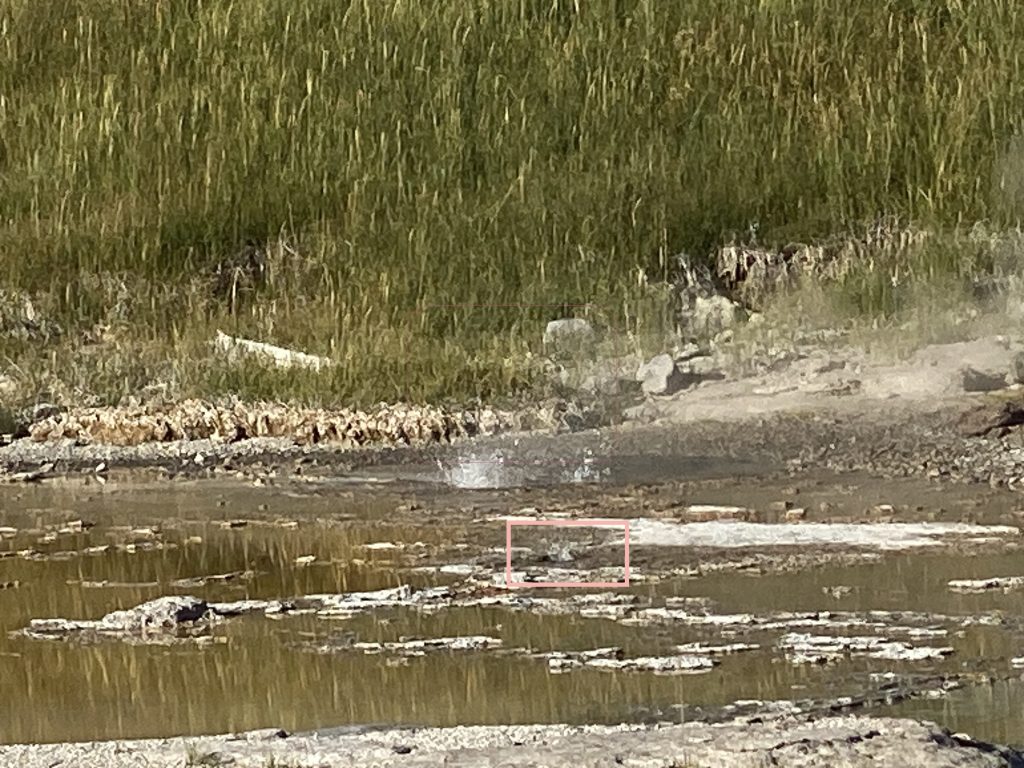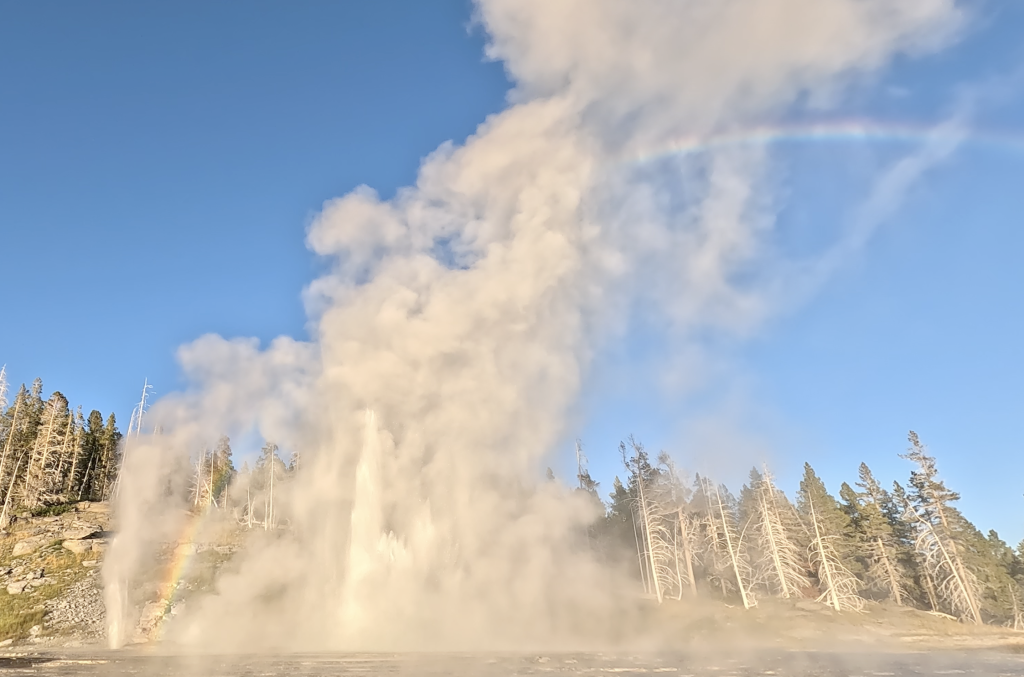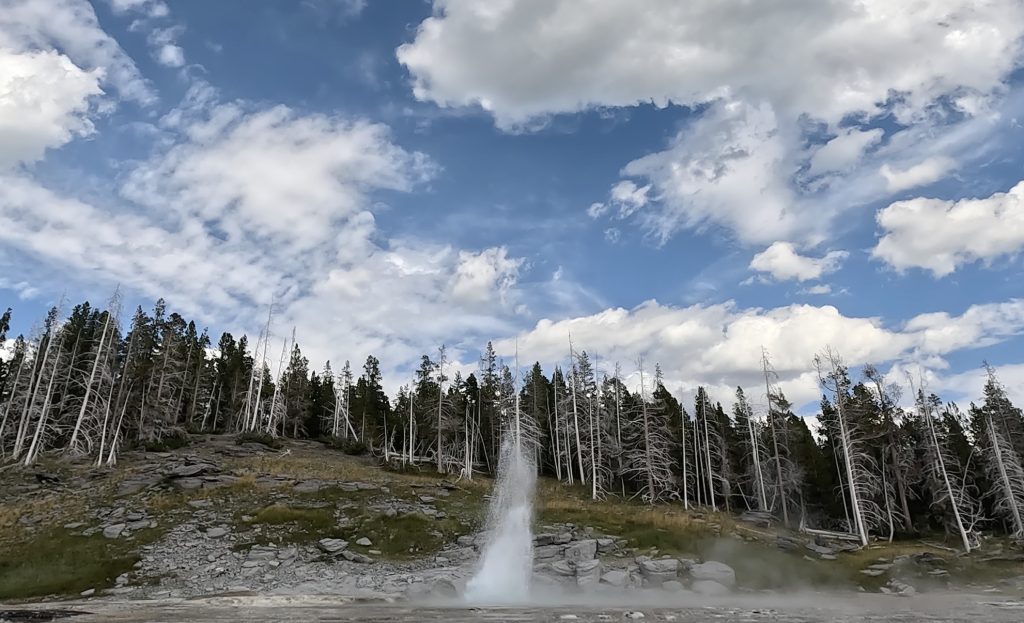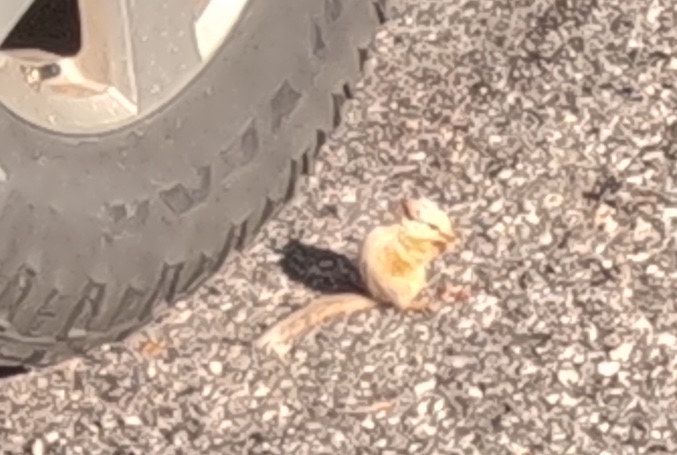Got out to Grand at the 12-1/2 hours mark, and didn't have enough time to get set up before the eruption started. It was a two burst eruption, and once again, around the 40 second mark of the second burst Grand went into Big Sawmill mode where it looked like it was going to stop, but would keep thrashing around with jets and boils less than 10 meters high.
2023-Aug-22:06:28:24 G2*Q 06:28:24 Grand B1 --- d=8m58s 06:29:10 Turban 0m46s 06:31:45 Vent 3m21s 06:37:22 P1 8m58s d=0m52s 06:38:15 B2 9m51s d=2m27s 06:39:03 FP 10m39s 06:40:42 P2 12m18s 06:41:21 V&T Quit 12m57s ΣB=11m25s ΣD=12m18s
After breakfast, went out to see this morning's Castle minor eruption. It lasted about 5-1/2 minutes, and was already having pauses at the three minute mark.
The weather was heavily overcast, but with little rain forecast. Unfortunately, there were showers showing on the radar map headed our way. At around the six hour mark, Grand had a strong Turban Eruption Interval which caused the eruption to finally happen five Turban intervals later. Fortunately, the showers didn't really appear, although after yesterday I didn't take any chances.
Once again, Grand had a short first burst and a long second, where the second was long (this time by one second) and much of that time was in Big Sawmill mode. Not only that, but the whole eruption lasted less than ten minutes.
2023-Aug-22:14:09:28 D5/T2*Q 14:08:45 Turban -0m43s 14:09:03 Vent Ovfl -0m24s 14:09:16 Boop -0m11s 14:09:28 Grand B1 --- d=7m56s 14:12:06 Vent 2m38s 14:17:25 P1 7m56s d=0m34s 14:18:00 B2 8m31s d=1m16s 14:19:08 FP 9m40s 14:19:16 P2 9m48s 14:20:19 V&T Quit 10m50s ΣB=9m13s ΣD=9m48s * * * * * 11:49:35 12:08:48 Int: 19m13s d=4m16s 12:41:34 Int: 32m46s d=4m43s D0 12:58:30 Int: 16m56s d=3m49s D1 13:16:22 Int: 17m52s d=3m59s D2 13:34:28 Int: 18m06s d=3m39s D3 13:51:36 Int: 17m08s d=3m47s D4 Turban: 17m09s
Beehive finally erupted a few hours later. The wind by that time was steady and strong, so I decided that the railing near Plume would be save, and it was. The winds didn't shift during the eruption, so the only area that got wet were the two benches and the wide platform. Since Old Faithful erupted at the same time, the crowd for Beehive was small.
It took six Turban eruption intervals from arrival at sunset to the One Burst Grand eruption. During that time we got to see Daisy erupt, a magenta sunset, and Castle finally have its major eruption after this morning's minor eruption. Grand was a disappointment, as the duration was just under 9-3/4 minutes. A minute after the eruption ended Vent & Turban got quite powerful, then calmed back down.
2023-Aug-22:21:54:00 G1C 21:53:55 Boop -0m04s 21:54:00 Grand B1 --- d=9m41s 22:03:41 P1 9m41s Vent & Turban continue ΣD=9m41s * * * * * 19:57:19 20:16:38 Int: 19m19s d=4m32s 20:35:36 Int: 18m58s d=4m14s 20:55:20 Int: 19m43s d=4m03s 21:13:10 Int: 17m50s d=3m59s 21:31:46 Int: 18m35s d=3m46s Grand: 22m13s




